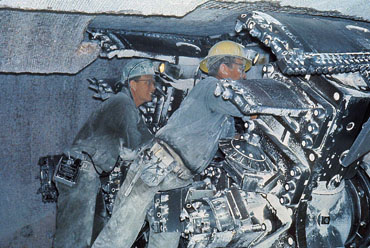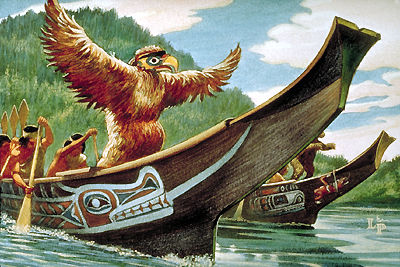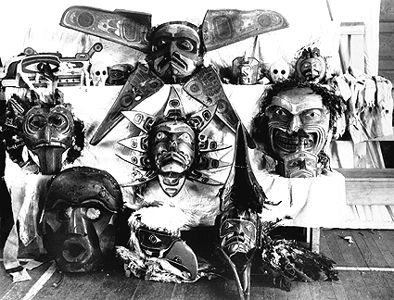Article
Potash
Potash is an alkaline potassium compound most commonly used in fertilizers. It refers to a variety of salts produced through mining of minerals and chemical manufacturing. Canada is the world's largest potash producer and exporter.

Enter your search term
Signing up enhances your TCE experience with the ability to save items to your personal reading list, and access the interactive map.
Create AccountArticle
Potash is an alkaline potassium compound most commonly used in fertilizers. It refers to a variety of salts produced through mining of minerals and chemical manufacturing. Canada is the world's largest potash producer and exporter.
"https://d3d0lqu00lnqvz.cloudfront.net/media/media/cd668309-705d-44b0-a404-7a6c5242db9b.jpg" // resources/views/front/categories/view.blade.phphttps://d3d0lqu00lnqvz.cloudfront.net/media/media/cd668309-705d-44b0-a404-7a6c5242db9b.jpg

Article
The potato (Solanum tuberosum) is a herbaceous annual of the nightshade family, which produces tubers at the end of underground branches called stolons.
"https://d3d0lqu00lnqvz.cloudfront.net/media/media/7b83d57e-9794-41ff-99cc-34ba45f21bba.jpg" // resources/views/front/categories/view.blade.phphttps://d3d0lqu00lnqvz.cloudfront.net/media/media/7b83d57e-9794-41ff-99cc-34ba45f21bba.jpg

Article
Potato wart disease, also called potato canker, is a fungal disease of potato sprouts, eyes and stolons. The disease is caused by the soil-borne fungus, Synchytrium endobioticum. Potato wart disease poses no danger to human health or food safety, but it can impact local economies as the disease can reduce yield and effect economic regulations, such as potato exports. (See also Agricultural Economics.)
"https://www.thecanadianencyclopedia.ca/images/tce_placeholder.jpg?v=e9dca980c9bdb3aa11e832e7ea94f5d9" // resources/views/front/categories/view.blade.phphttps://www.thecanadianencyclopedia.ca/images/tce_placeholder.jpg?v=e9dca980c9bdb3aa11e832e7ea94f5d9

Article
The potlatch (from the Chinook word Patshatl) is a ceremony integral to the governing structure, culture and spiritual traditions of various First Nations living on the Northwest Coast and in parts of the interior western subarctic. It primarily functions to redistribute wealth, confer status and rank upon individuals, kin groups and clans, and to establish claims to names, powers and rights to hunting and fishing territories.
"https://d3d0lqu00lnqvz.cloudfront.net/media/media/2c58511b-8b7a-4b34-963b-edfb3bab4f0d.jpg" // resources/views/front/categories/view.blade.phphttps://d3d0lqu00lnqvz.cloudfront.net/media/media/2c58511b-8b7a-4b34-963b-edfb3bab4f0d.jpg

Article
From 1885 to 1951, the Indigenous ceremony known as the Potlatch was banned by the federal government of Canada. The government justified their decision to ban the Potlatch because they believed it was preventing the assimilation of Indigenous Peoples. Today, this ban is recognized as an aspect of cultural genocide (see Genocide and Indigenous Peoples in Canada). Though the Potlatch was illegal during this period of time, the ban was only ever sporadically enforced. This was in part a result of the vagueness of the wording of the law. The law was rewritten and prosecutions increased. In 1922, Indian agents, aided by police, arrested individuals who had participated in a Potlatch held in the community of ʼMimkwa̱mlis. They arrested 45 people. Ultimately, this resulted in imprisonment and the confiscation of hundreds of precious ceremonial objects.
"https://d3d0lqu00lnqvz.cloudfront.net/media/media/f2fed9a9-c6dc-429a-80cd-98e6c7825449.jpg" // resources/views/front/categories/view.blade.phphttps://d3d0lqu00lnqvz.cloudfront.net/media/media/f2fed9a9-c6dc-429a-80cd-98e6c7825449.jpg

Article
The Québécois dessert called pouding chômeur — poor man’s pudding, or more literally, pudding of the unemployed — is delectably rich and incredibly simple.
"https://d3d0lqu00lnqvz.cloudfront.net/media/media/9861ff9c-cc39-4d9e-97b1-81b0938aff90.jpg" // resources/views/front/categories/view.blade.phphttps://d3d0lqu00lnqvz.cloudfront.net/media/media/9861ff9c-cc39-4d9e-97b1-81b0938aff90.jpg

Article
About nine per cent of Canadians live in poverty, although the percentage is generally higher among certain groups such as single mothers and Aboriginal people. Low-income Canadians include the "working poor" — those with jobs — and the "welfare poor" — those relying mainly on government assistance.
"https://d3d0lqu00lnqvz.cloudfront.net/media/media/bc62a9cc-7256-4500-818b-6f2cd7bab8e2.jpg" // resources/views/front/categories/view.blade.phphttps://d3d0lqu00lnqvz.cloudfront.net/media/media/bc62a9cc-7256-4500-818b-6f2cd7bab8e2.jpg

Article
Power Corporation of Canada, controlled by Paul Desmarais Jr. and André Desmarais (sons of the late PAUL DESMARAIS), was incorporated in 1925. It is a large and diversified company engaged in communications and financial services, as well as other business interests.
"https://www.thecanadianencyclopedia.ca/images/tce_placeholder.jpg?v=e9dca980c9bdb3aa11e832e7ea94f5d9" // resources/views/front/categories/view.blade.phphttps://www.thecanadianencyclopedia.ca/images/tce_placeholder.jpg?v=e9dca980c9bdb3aa11e832e7ea94f5d9

Macleans
Tobin's chipper words aside, there remain daunting hurdles to overcome if the premier's power play is to become a reality by 2007, the target completion date.This article was originally published in Maclean's Magazine on March 23, 1998
"https://d3d0lqu00lnqvz.cloudfront.net/media/media/697bba1d-7d03-4ef3-aa0b-5ac5d05a02bc.jpg" // resources/views/front/categories/view.blade.phphttps://d3d0lqu00lnqvz.cloudfront.net/media/media/697bba1d-7d03-4ef3-aa0b-5ac5d05a02bc.jpg

Article
R. v. Powley was a legal case concerning Métis hunting rights in Canada. In 1993, the province of Ontario charged Steve and Roddy Powley with illegal hunting. The Powleys disputed their conviction, arguing that the Aboriginal rights enshrined in section 35 of the Constitution Act, 1982 protected their hunting rights as Métis people. The case concluded in 2003, when the Supreme Court of Canada ruled that the Powleys were, in fact, exercising lawful Métis hunting rights. The Powley case established criteria on who can legally qualify for Métis rights. It outlined 10 specific criteria, known as the Powley Test, which applies to Métis communities across Canada. The case also clarified that the Métis are a distinct people, separate from First Nations and Inuit peoples in Canada. Some legal experts believe the Powley case might lead to expanded Métis rights, including harvesting and fishing rights and possibly self-government.
"https://d3d0lqu00lnqvz.cloudfront.net/media/media/4de10db1-6b8b-45ef-a60a-55998c7afca0.jpg" // resources/views/front/categories/view.blade.phphttps://d3d0lqu00lnqvz.cloudfront.net/media/media/4de10db1-6b8b-45ef-a60a-55998c7afca0.jpg

Article
Powwow dances are beautiful expressions of Indigenous spirituality, history and culture.
"https://d3d0lqu00lnqvz.cloudfront.net/media/media/2be60d63-a3cd-43f0-be85-0af738187639.jpg" // resources/views/front/categories/view.blade.phphttps://d3d0lqu00lnqvz.cloudfront.net/media/media/2be60d63-a3cd-43f0-be85-0af738187639.jpg

Article
Music is a central feature at powwows, as all powwow activities revolve around the beat of the drum and the sounds of the singers’ voices.
"https://d3d0lqu00lnqvz.cloudfront.net/media/media/da9de904-834e-4aca-b3c6-8333c48235a7.jpg" // resources/views/front/categories/view.blade.phphttps://d3d0lqu00lnqvz.cloudfront.net/media/media/da9de904-834e-4aca-b3c6-8333c48235a7.jpg

Article
Powwows are celebrations that showcase Indigenous music, dances, regalia, food and crafts. Commonly hosted by First Nations communities (either on reserve or in urban settings), powwows are often open to non-Indigenous and Métis and Inuit peoples alike. Contemporary powwows originated on the Great Plains during the late 19th century and, since the 1950s, have been growing in size, number and popularity. Powwows serve an important role in many Indigenous peoples’ lives as a forum to visit family and friends, and to celebrate their cultural heritage, while also serving as a site for cross-cultural sharing with other attendees and participants. Indeed, powwows provide the opportunity for visitors to learn about, and increase their awareness of, traditional and contemporary Indigenous life and culture.
"https://d3d0lqu00lnqvz.cloudfront.net/media/media/e2dfc5a1-46ca-4732-b1b4-459c1b227e67.jpg" // resources/views/front/categories/view.blade.phphttps://d3d0lqu00lnqvz.cloudfront.net/media/media/e2dfc5a1-46ca-4732-b1b4-459c1b227e67.jpg

"https://www.thecanadianencyclopedia.ca/images/tce_placeholder.jpg?v=e9dca980c9bdb3aa11e832e7ea94f5d9" // resources/views/front/categories/view.blade.phphttps://www.thecanadianencyclopedia.ca/images/tce_placeholder.jpg?v=e9dca980c9bdb3aa11e832e7ea94f5d9

Article
The prairie dog is a highly gregarious, diurnal, terrestrial ground squirrel that lives in colonies or "towns."
"https://d3d0lqu00lnqvz.cloudfront.net/media/media/39e55559-6a69-49c6-834a-d2eb438d0ea7.jpg" // resources/views/front/categories/view.blade.phphttps://d3d0lqu00lnqvz.cloudfront.net/media/media/39e55559-6a69-49c6-834a-d2eb438d0ea7.jpg
